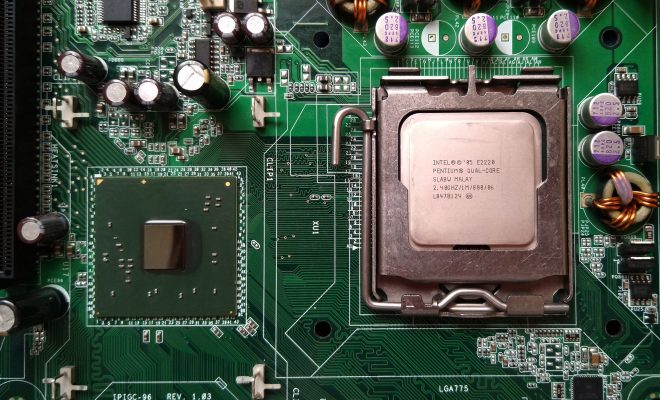What Is a Motherboard Chipset?

When it comes to building or upgrading a computer, the motherboard chipset is an important component that often goes unnoticed. But what exactly is a motherboard chipset, and why is it crucial for your computer’s performance?
In essence, a chipset is a group of electronic components on a motherboard that work together to manage the data flow between the processor, memory, and other peripherals. The two main components of a chipset are the Northbridge and the Southbridge.
The Northbridge is responsible for connecting the CPU and RAM, as well as controlling data transfer between the CPU and other high-speed peripherals such as graphics cards. It also controls the speed and bandwidth of the system memory.
On the other hand, the Southbridge manages lower-speed peripherals such as USB ports, PCI slots, and SATA ports, as well as providing support for integrated components such as audio and network interfaces.
Together, these two components form the backbone of the motherboard, facilitating communication between all the different hardware components in the system.
A motherboard chipset can have a significant impact on overall system performance. In particular, the Northbridge chipset can affect the speed and stability of the system, as well as its ability to handle resource-intensive tasks such as gaming or video editing.
For this reason, it’s important to choose a motherboard with a chipset that’s compatible with your CPU and meets your performance needs. When selecting a chipset, consider factors such as the number of RAM slots, the maximum memory capacity, and the number and type of peripheral ports.
In addition to performance considerations, motherboard chipsets may also have important security and reliability features. For example, some chipsets may include advanced encryption protocols, secure boot functionality, or hardware-level monitoring capabilities to protect against hacking, viruses, or hardware failure.
Overall, the motherboard chipset is a crucial component in any computer system, providing the framework for all the other hardware components to work smoothly and efficiently. Whether you’re building a new computer from scratch or upgrading an existing system, understanding the role of the motherboard chipset can help you make informed decisions about choosing the right hardware for your needs.





